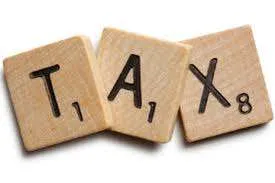A TFRA account can be a powerful retirement strategy. Technically called a tax-free retirement account. It is a long-term investment strategy that can help mitigate taxes at retirement.
Technically, a TFRA is not a qualified retirement account. So the rules and requirements are different from an IRA and 401(k). However, it often offers many of the same benefits and risk profiles for retirement investors.
If you are looking for large tax-deductible contributions, you should consider a cash balance plan. You can find out more about them here. But if you want tax-free growth, a TFRA can be a home run.
In this post, I will discuss the TFRA account and see if it is an excellent fit for you. Let’s jump in.
Table of contents
What is a TFRA (Tax-Free Retirement Account)?
TFRA’s are a specific type of investment account that is covered under section 7702 of the internal revenue code. They are structured to provide tax-free income during retirement. This is much like a Roth IRA. But you might commonly hear a TFRA referred to as a section 7702 plan.
These plans offer investors an alternative way to free retirement beyond a traditional 401(k), cash balance plan, or IRA. But the critical distinction is that they’re not technically retirement accounts at all. They have actually qualified life insurance contracts used to generate tax-free income during retirement.
Now I get it. Most people don’t like the words life insurance or annuity. They are used to excessively and have a very negative connotation for investors.
But the critical thing advantage of the plans is that life insurance can be structured to be tax-free. So if the plans are structured correctly, they can make perfect sense.
Investors should not automatically be turned off just because of the words life insurance. Income generated in the policy is tax freeze, so they act very much like a Roth.
What are the TFRA Account Requirements?
The TFRA account is funded through permanent cash value life insurance. There are various ways to structure the account, but usually, it takes the form of:
- Universal life insurance;
- Variable life insurance; or
- Whole life insurance.
The TFRA is funded with after-tax dollars similar to a Roth IRA or Roth 401(k). The cash value within the policy grows tax-deferred, and investors can take out tax-free loans from the cash value during their lifetime. The cash value balance that a cruise within the policy will depend on the underlying investment account strategy.

Because TFRA accounts are not qualified plans, they are not subject to the same tax requirements as other retirement structures. They are not subject to a 10% early withdrawal penalty, and you are not restricted to taking the funds out of retirement before 59 1/2 like he would on a qualified retirement plan.
In a perfect world, TFRA’s are used and structured alongside other retirement plans, so an investor has more control over their marginal tax bracket in retirement. The plans cannot be commingled. You cannot put your IRA funds within the TFRA and vice versa. Do you want to make sure any IRAs 401(k)s and qualified plans are held within those account structures.
Advantages of TFRA Accounts
Let’s take a close look at the advantages of TFRA’s or section 7702 plans. Here are a few:
- Income from these plans is tax-free
- The principle is not taxable either
- They offer more liquidity than 401(k) plans because there is no 59 1/2 year age limit or 10% penalty.
- You can access the cash value without triggering any penalty or tax.
- Since the funds are tax-free, you can distribute amounts to keep your tax bracket below a certain level.
- Because they could be used with different retirement structures or insurance, each investor can modify the plan to achieve a different risk profile.
But don’t forget, this is life insurance. So it means that once upon your death, your beneficiaries will be able to collect a death benefit.
You can also have a rider that allows you to take accelerated death benefits to pay for end-of-life care. Any accelerated benefits or a loan from the policy that is not repaid will reduce the death benefit to your beneficiaries.
Disadvantages of TFRA accounts
Now that you understand the advantages let’s look at some of the disadvantages.
Here are a few:
- You do not receive a tax deduction when you contribute funds to the account. For this reason, they are often used simultaneously with a qualified retirement plan like a 401(k) or a defined benefit plan.
- The cash value life insurance policies are slightly more expensive than term life. The policy covers you if you pass away, so the company will have to pay out a significant death benefit.
- Some plans can come with administrative fees or other management-related fees or commissions. Make sure you minimize any costs associated with a TFRA.
- These plans’ management fees and commissions are typically higher than 401(k)s or IRAs.
TFRA Account vs Roth IRA vs 401(k)
We have covered some of the advantages and disadvantages. But now let’s closely compare a TFRA to a Roth IRA or Roth 401k:
- While both structures offer tax-free retirement, the Roth IRA and Roth 401(k) are more restrictive because they are subject to the annual contribution limits.
- Many companies do not offer Roth 401k contributions. But TFRA are not company sponsored, so they can be done outside of current retirement structures.
You should also compare your options to a traditional IRA or 401(k) plan:
- Make sure you consider tax-deferred accounts first. These plans will offer the chance for immediate tax deductions and tax-deferred growth.
- Again, 401(k) plans are company sponsored and many companies do not offer them.
- 401(k) plans will not offer any insurance, but will often have more flexible investment options.
How to Open an Account
The first step to opening at TFRA is to speak to a financial advisor about your options. The plans need to be carefully structured so that they follow section 7702. So it’s not something you can do on your own.
Here are the 5 steps to opening a TFRA account:
- Review with your CPA
Make sure you talk to your CPA first to examine your overall financial and tax situation. The CPA is in the best situation to review current retirement funds and savings and help you determine what you would expect your tax bracket to be in retirement.
- Determine TFRA structure
Remember that these plans are technically tax efficient life insurance policies. What sort of life insurance do you need, and what would be the policy limits? These issues should be addressed up front.
- Analyze contribution requirements
These plans do not have the same contribution limits as Roth IRAs and Roth 401(k)s. Carefully consider how much you can afford to contribute to these plans on an annual basis.
- Review with your financial advisor
How much income can you generate? What is the ultimate income stream you’re looking for? These are questions that are best addressed with your financial planner.
- Consider other options
You might find that a cash balance plan or other defined benefit plan structure would make more sense depending on your current tax bracket. If you are in a high tax bracket, make sure you consider tax-deferred accounts first.
Final Thoughts
Very little is known about TFRA retirement accounts. But they can be a great strategy in the right situation.
Many people don’t have a chance to get significant savings within a Roth. But a TFRA can be structured to have substantial contributions.
Make sure you contribute to your 401(k) and IRA, which consider a TFRA to complement the strategy. The more income streams you create, the better off your overall financial situation will be in retirement.
